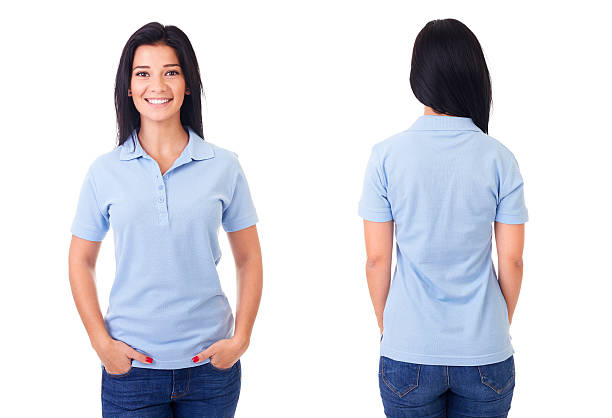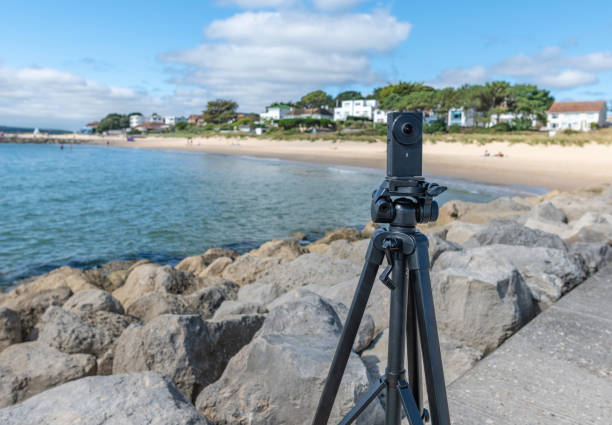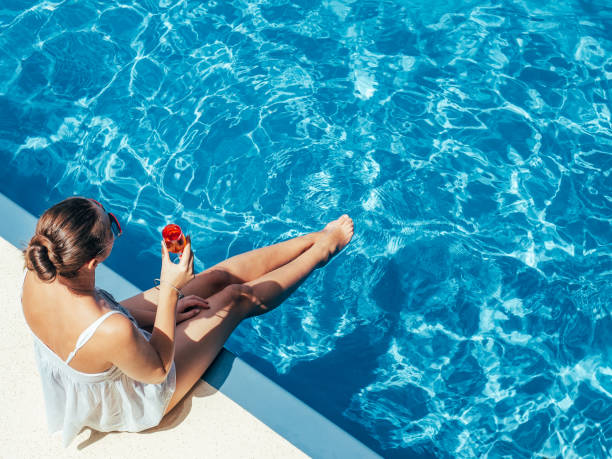Best Drone Cameras

Whether you’re a budding filmmaker, a real estate agent wanting to elevate your listings, or just a tech enthusiast who loves capturing the world from above, drone cameras have opened up an entirely new frontier for visual storytelling. I still remember the first time I flew a drone. It was a mix of nervous anticipation and childlike wonder as I watched it lift off and stream stunning live footage to my phone.
Today’s drones aren’t just flying toys; they’re sophisticated imaging tools. With 4K+ cameras, cinematic gimbals, AI-based tracking, and flight times that rival some aircraft-grade batteries, drone technology has soared to incredible heights.
In this guide, I’ll walk you through what makes a drone camera truly great, explore categories based on use cases, and dive into hands-on reviews of the best models on the market.
What Makes a Drone Camera “the Best”?
The word “best” means different things to different people, especially when it comes to drones. Some users are chasing cinematic glory, while others are looking for something compact and reliable for travel or vlogging. Still, there are key technical pillars that elevate a drone camera from average to exceptional:
Camera Quality
A drone’s camera is its eye in the sky and for many, the most important spec. Look out for:
- Sensor size: Larger sensors like 1” CMOS or Micro Four Thirds capture more light and detail.
- Megapixels: More megapixels = higher resolution, but not always better image quality.
- Video resolution & frame rate: 4K at 60fps is the current standard for most pros. Some high-end drones offer 5.1K or even 8K.
- Dynamic range: Helps preserve detail in both shadows and highlights.
Stabilization
Shaky footage? No thanks. The best drones use:
- 3-axis gimbals to physically stabilize the camera.
- Software-based EIS (Electronic Image Stabilization) to further smooth things out.
Good stabilization makes your aerial footage look like it belongs in a Hollywood movie.
Flight Performance
The best camera in the world won’t help if your drone can’t stay airborne. Key flight features include:
- Battery life: Typically ranges from 20–45 minutes.
- Control range: Some models now boast ranges up to 15 km!
- Wind resistance: Especially important if you plan to shoot in varied environments.
Smart Features
Modern drones are like flying computers. Here are the features that elevate usability:
- Follow-me mode & subject tracking
- Obstacle avoidance (360° sensors are a big plus)
- GPS-assisted return-to-home
- Waypoint and route planning
Portability & Design
If you travel often or shoot on location, portability is huge. Foldable designs and sub-250g weight classes (important for regulations) make travel drones very attractive.
Price vs. Value
We all want the best bang for our buck. A $1000 drone might seem steep—until you compare its features to what you’d pay for similar camera gear and stabilization on the ground. That said, budget-friendly drones can surprise you.
Different Users, Different Needs
Here’s a quick breakdown of how needs differ:
- Vloggers & Travelers: Need something lightweight, foldable, and with great automated shots. DJI Mini 4 Pro is a popular choice.
- Real Estate Pros: Crisp, high-res stills, easy flying, and wide-angle lenses are key.
- Cinematic Filmmakers: Highest image quality, manual camera control, ND filters, and long flight times.
- Beginners: Easy to use, budget-friendly, durable. Holy Stone HS720E is a great entry-level option.
Categories of Drone Cameras
Let’s segment the options by use case before diving into specific recommendations.
Best for Professional Filmmaking
These are your top-tier machines with pro-grade optics, high bitrate recording, and unmatched dynamic range. Check out the DJI Mavic 3 Pro.
Best for Photography Enthusiasts
Drones in this category offer excellent stills with RAW support, decent flight times, and solid build quality. The Autel EVO Lite+ is a favorite.
Best Budget Drone with Camera
Ideal for beginners or hobbyists who want solid performance without draining their wallet. The Holy Stone HS720E fits the bill.
Best Compact or Travel Drones
Lightweight, foldable, and perfect for slipping into a backpack for on-the-go adventures. The DJI Mini 4 Pro again shines here.
Best for Beginners
These drones offer simple controls, automatic flight modes, and a low barrier to entry.
Best for FPV (First Person View) Flying
Adrenaline junkies, this one’s for you. FPV drones give you a live cockpit view and total control for racing or immersive flight. The BetaFPV Pavo20 is top-rated.
Best Drone Cameras: Top Picks with Reviews
1. DJI Air 3 – Best All-Round Drone Camera

Pros:
- Dual-camera system (wide + telephoto)
- Excellent flight time (~46 mins)
- Omnidirectional obstacle sensing
- 4K/100fps video with D-Log M
Cons:
- On the pricier side for hobbyists
Key Specs:
- Camera: 1/1.3″ CMOS (dual)
- Flight Time: 46 mins
- Range: 20 km (OcuSync 4.0)
- Weight: 720g
Best for: Filmmakers, serious hobbyists, and travelers wanting versatility.
The DJI Air 3 hits that sweet spot between performance and portability. It’s the drone I find myself recommending most often to friends.
2. DJI Mini 4 Pro – Best for Portability & Travel

Pros:
- Ultra-lightweight (249g)
- Vertical shooting for social media
- 4K/60fps HDR video
- Great safety features
Cons:
- Smaller sensor = less low-light performance
Key Specs:
- Camera: 1/1.3″ CMOS
- Flight Time: 34 mins
- Range: 20 km
- Weight: 249g
Best for: Vloggers, travelers, and anyone who wants a regulation-friendly drone.
I take the DJI Mini 4 Pro on every trip. It’s like carrying a tripod, gimbal, and 4K camera all in one tiny package.
3. Autel Robotics EVO Lite+ – Best Low-Light Performance

Pros:
- Large 1″ sensor
- Adjustable aperture (f/2.8–f/11)
- Superb low-light capabilities
- No geo-fencing
Cons:
- App not as refined as DJI’s
Key Specs:
- Camera: 1″ CMOS, 50MP
- Flight Time: 40 mins
- Range: 12 km
- Weight: 835g
Best for: Night shooters, real estate pros, and photographers.
If you’ve ever wanted to shoot a golden hour or cityscape at dusk, the EVO Lite+ is your best friend.
4. Skydio 2+ – Best for Autonomous Flying
Pros:
- Insane AI tracking
- Best obstacle avoidance system on the market
- American-made
Cons:
- Camera specs not quite top-tier
- Pricey for casual users
Key Specs:
- Camera: 1/2.3” CMOS
- Flight Time: 27 mins
- Range: 6 km
- Weight: 800g
Best for: Solo athletes, adventure vloggers, and outdoor filming.
I’ve seen this drone dodge trees in real-time while tracking a mountain biker. Mind-blowing.
5. DJI Mavic 3 Pro – Best for Professionals

Pros:
- Triple-camera setup including a 4/3 Hasselblad sensor
- 5.1K ProRes video
- Unmatched dynamic range
Cons:
- Expensive
- Overkill for casual users
Key Specs:
- Camera: 4/3″ Hasselblad + 2 telephoto lenses
- Flight Time: 43 mins
- Range: 15 km
- Weight: 958g
Best for: Cinematographers, documentary creators, and drone professionals.
If you make money from aerial footage, the Mavic 3 Pro is the drone to own.
6. Holy Stone HS720E – Best Budget Drone with 4K Camera

Pros:
- Great value under $400
- 4K EIS camera
- Foldable and beginner-friendly
Cons:
- No gimbal stabilization
- Average image quality
Key Specs:
- Camera: 4K with EIS
- Flight Time: 46 mins
- Range: 1 km
- Weight: 495g
Best for: Beginners, students, casual hobbyists.
This was my starter drone. The Holy Stone HS720E gave me confidence to fly and experiment without fear of crashing a thousand-dollar machine.
7. BetaFPV Pavo20 – Best FPV Drone with Camera

Pros:
- Lightweight cinewhoop style
- HD digital FPV (with DJI goggles)
- Great for indoor or tight-space flying
Cons:
- Steep learning curve
- Short flight time (~5–7 mins)
Key Specs:
- Camera: DJI O3 Air Unit (up to 4K/60fps)
- Flight Time: 5–7 mins
- Weight: ~150g
Best for: FPV enthusiasts, drone racers, and acrobatic flyers.
If you’re craving speed and immersion, check out the BetaFPV Pavo20. It’s an absolute blast once you get the hang of it.
How to Choose the Right Drone Camera for You
Here’s a simple framework to help you decide:
- Set Your Budget: Drones range from $200 to $3000+. Know your ceiling.
- Define Your Purpose: Are you shooting weddings? Just traveling? Racing?
- Match the Camera to the Task: Look for sensor size, bitrate, and stabilization.
- Check Legal Requirements: Sub-250g drones may not require registration in many countries.
- Future-Proofing: Look for firmware update support, modularity, and accessory ecosystem.
Final Thoughts
We’ve covered a lot of ground—err, sky! Let’s recap:
- Best All-Rounder: DJI Air 3
- Best Travel Drone: DJI Mini 4 Pro
- Best for Low Light: Autel EVO Lite+
- Best for Beginners: Holy Stone HS720E
- Best for Professionals: DJI Mavic 3 Pro
- Best FPV Drone: BetaFPV Pavo20
Ultimately, the best drone is the one that meets your needs. Don’t feel pressured to go pro if you’re just getting started. And don’t settle for less if your work demands cinematic quality.
Loved this guide?
- Subscribe to our newsletter for more posts like this.
- Got questions? Drop them in the comments below. We respond to every one!
- And if you found this post helpful, share it on social media to help others take flight.
Happy flying and safe skies
* Voyedy may receive compensation for purchases made at participating retailers linked on this site. This compensation does not affect the products displayed or their order. Learn more here.





